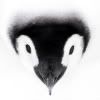
Paleontologists Audition Modern Examples of Ancient Behavior
ScienceDaily (Apr. 18, 2011) — Paleontologists agree that it's difficult to observe behavior in fossil specimens that are dead -- even extinct -- and petrified. One method is to find a modern, living, species that has some similarities to the ancient animal.
That's the strategy adopted by David L. Meyer, University of Cincinnati professor of geology and colleagues as they study a group of ancient shellfish known as brachiopods. Although they resemble clams or other shelled mollusks, brachiopods are more closely related to marine worms. Relatively rare today, brachiopods were a dominant species in Paleozoic seas.
In the fossil-rich rocks of the Cincinnati region, a group of brachiopods known as strophomenates are found fossilized surrounded by tiny "moats." It is believed that the brachiopods themselves made the moats, but it is not certain how they did so. Paleontologists think the animals needed to open their shells to a gape of more than 45 degrees to make the moats.
Meyer, along with Benjamin Dattilo of Indiana University Purdue University Fort Wayne (a Ph.D. graduate of UC's geology program), and two students went looking for a modern analogue to the Paleozoic brachiopods. They found a tiny modern brachiopod named Thecidellina meyeri in the waters off Curaçao in the southern Caribbean.
"It's a reasonably good analogue," Meyer said. "They gape widely, and the internal anatomy shows similar structures."
Meyer, Dattilo, and UC students Tanya Del Valle and Christine Rahtz collected a fragment of coral covered with more than 30 Thecidellina specimens, and placed it in a tank with running seawater in the lab in Curaçao.
"They rapidly recovered," Meyer said, "resumed normal feeding behaviors, and maintained a 90-degree gape."
With video cameras recording, the paleontologists measured the ability of the modern brachiopods to move water around, generating relatively sluggish feeding currents and relatively strong currents when they snapped their shells shut.
Sometimes, the brachiopods would snap shut, stay shut, and then slowly open. At other times, they would open partially and shut several times in rapid succession.
The behavior of the modern animals provides a clue to ancient behaviors.
"By analogy," Meyer said, "feeding currents of the ancient brachiopods were too weak to disturb sediments, allowing them to feed close to the sea floor."
Story Source:The above story is reprinted (with editorial adaptations by ScienceDaily staff) from materials provided by University of Cincinnati, via EurekAlert!, a service of AAAS.
--
Got Penguins?
Penguin News Today
The Science of Penguins
The Gentoos are back! Come see them on live cam at:
Gentoo Penguins of Gars O'Higgins Station, Antarctica

__._,_.___
No comments:
Post a Comment